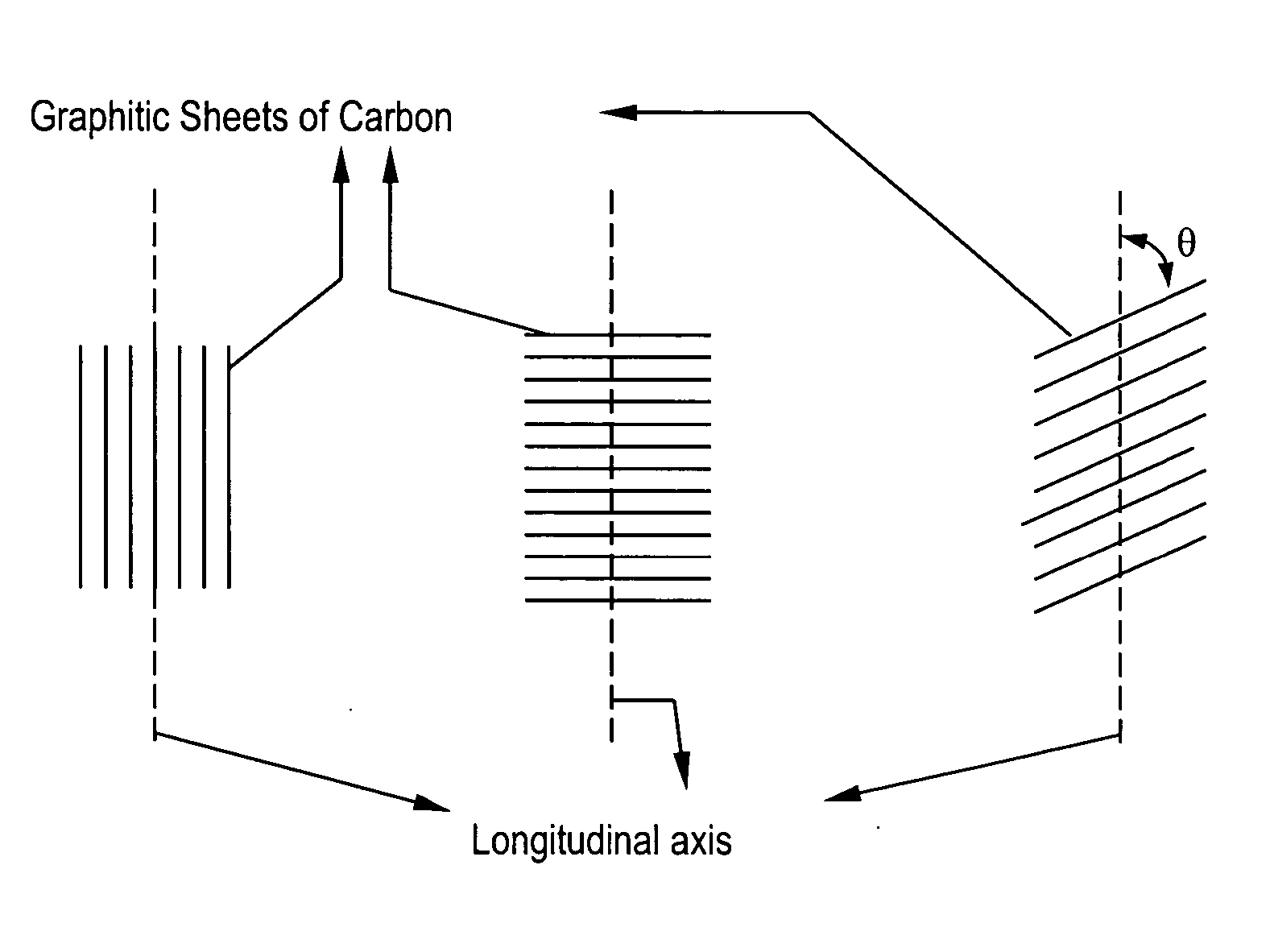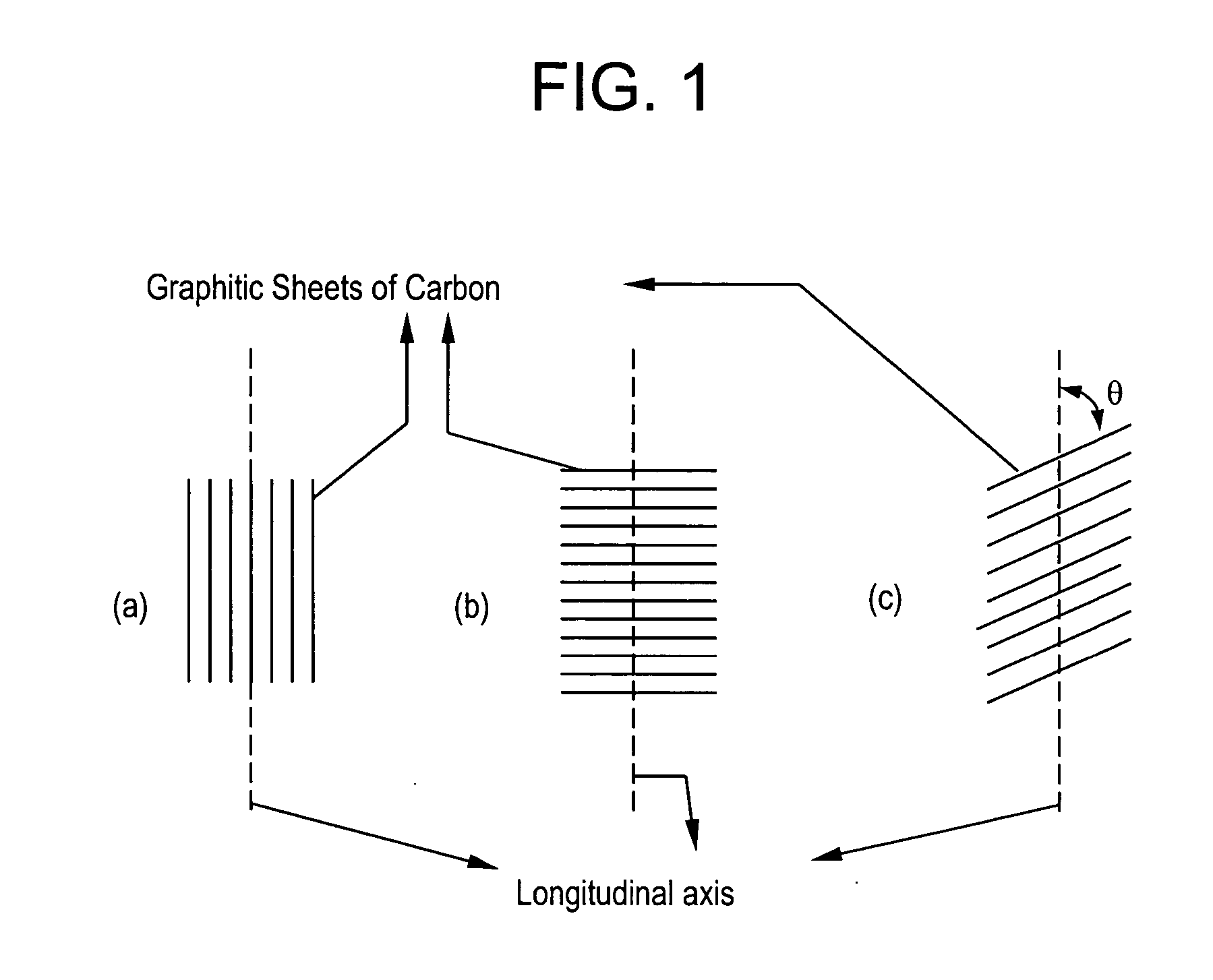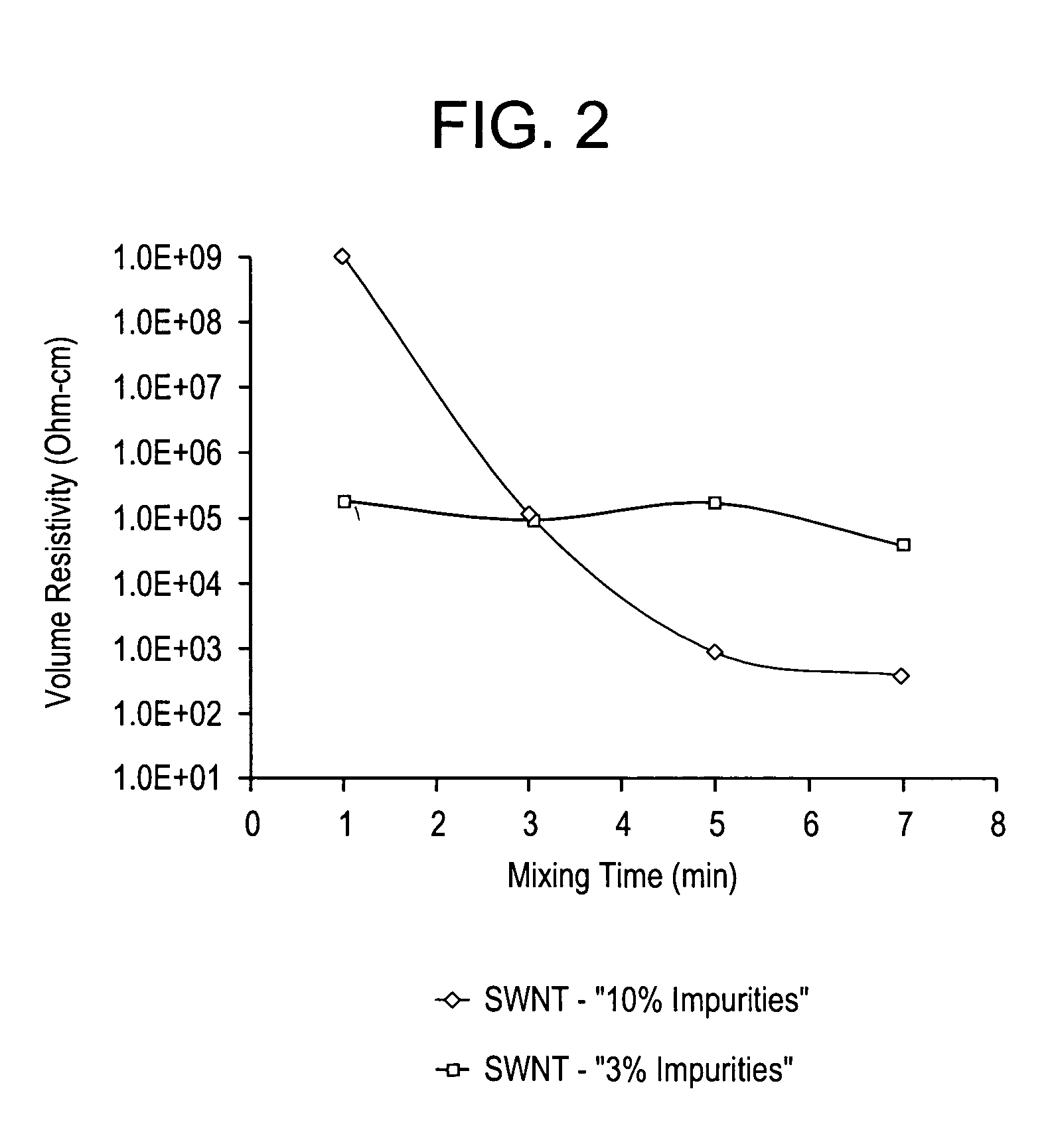Electrically conductive compositions and method of manufacture thereof
- Summary
- Abstract
- Description
- Claims
- Application Information
AI Technical Summary
Benefits of technology
Problems solved by technology
Method used
Image
Examples
example 1
This example demonstrates the effect of shear and as well as the effects of impurities on the level of conductivity that may be attained when carbon nanotube compositions are blended with thermoplastic resins. In this example, a polycarbonate resin having a number average molecular weight of about 17,000 grams / mole and a weight average molecular weight of Mw about 41,000 was blended with 1 wt % of carbon nanotubes in a DACA mini twin screw extruder. The DACA mini twin screw extruder has a maximum mixing volume of 5 cubic centimeters and has a screw speed of from about 10 to about 360 rpm which is digitally controllable in 1 rpm increments. The carbon nanotube compositions contained either 3 wt % or 10 wt % impurities. Carbon nanotube compositions containing 3 wt % impurities are termed SWNT-3, while those containing 10 wt % impurities are termed SWNT-10.
These impurity levels were determined by thermogravimetric analysis (TGA) wherein the sample was burned while the remaining weig...
example 2
This experiment was conducted to determine the effect of mixing on the molecular weight of the resin and on the SVR of the resulting blend. In this example, a polycarbonate resin was blended with 1 wt % of the carbon nanotube composition in the DACA mini twin screw extruder for time periods of about 1 minute to about 10 minutes. The compositions as well as the method of manufacture were similar to those used in Example 1. The test methods employed were similar to those detailed above. The number (Mn) and weight average (Mw) molecular weights of the polycarbonate was measured by GPC and is shown in Tables 3 and 4 below.
TABLE 3%%TimeImpuritiesdecreasedecreaseSVR(min)(%)Mnin MnMwin Mw(ohm-cm)0Pure PC17,136—41,609——11015,943 7.039,126 6.0—31014,63114.635,85413.8494,381 51014,41315.935,58714.544,70671014,07017.934,39617.349,851101013,80819.433,96418.490,763
TABLE 4%%TimeImpuritiesdecreasedecreaseSVR(min)(%)Mnin MnMwin Mw(ohm-cm)0Pure PC17,136—41,609——1314,97912.636,28212.8 7,3533314,80...
example 3
These experiments were conducted to determine the effect of carbon nanotubes on the molecular weight of Nylon 6,6 and on the SVR of the resulting blend. In this example, a Nylon 6,6 resin was blended with 3 wt % of the carbon nanotube composition in the DACA mini twin screw extruder for time periods of about 1 minute to about 7 minutes as shown in Tables 5 and 6 below. The extrusion temperature was 275° C., and the screw speed was 150 rpm. The test methods employed were similar to those detailed above. The number (Mn) and weight average (Mw) molecular weights of the Nylon 6,6 resin was measured by GPC and is shown in Tables 5 and 6 below.
TABLE 5Impurities%%Time(ResidualDecreaseDecreaseSVR(Min)TGA %)Mnin MnMwin Mw(ohm-cm)0Pure N6624655—59203——13234414.960318−1.9182,16823226148.359861−1.1 20,909332219910.0 59809−1.0 92,51553238193.462673−5.9168,969
TABLE 6Impurities%%Time(ResidualDecreaseDecreaseSVR(Min)TGA %)Mnin MnMwin Mw(ohm-cm)0Pure N6624655—592030.0—1102025317.9573293.2OL210242...
PUM
| Property | Measurement | Unit |
|---|---|---|
| Impact strength | aaaaa | aaaaa |
| Impact strength | aaaaa | aaaaa |
| Molar mass | aaaaa | aaaaa |
Abstract
Description
Claims
Application Information
 Login to View More
Login to View More - R&D
- Intellectual Property
- Life Sciences
- Materials
- Tech Scout
- Unparalleled Data Quality
- Higher Quality Content
- 60% Fewer Hallucinations
Browse by: Latest US Patents, China's latest patents, Technical Efficacy Thesaurus, Application Domain, Technology Topic, Popular Technical Reports.
© 2025 PatSnap. All rights reserved.Legal|Privacy policy|Modern Slavery Act Transparency Statement|Sitemap|About US| Contact US: help@patsnap.com



